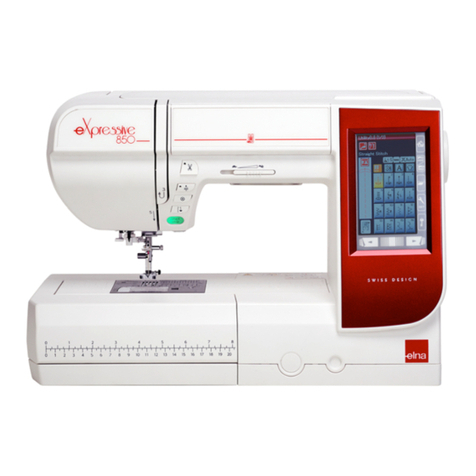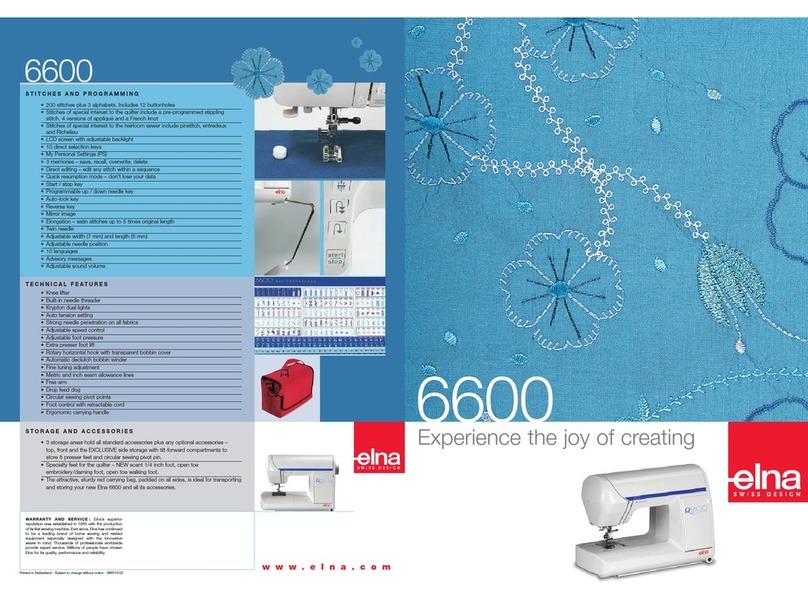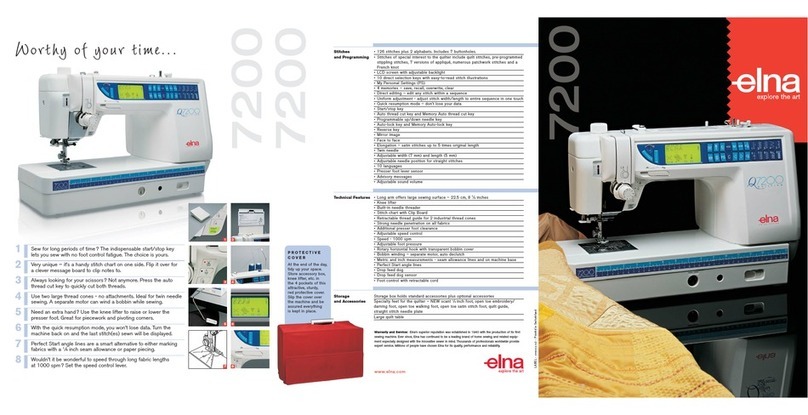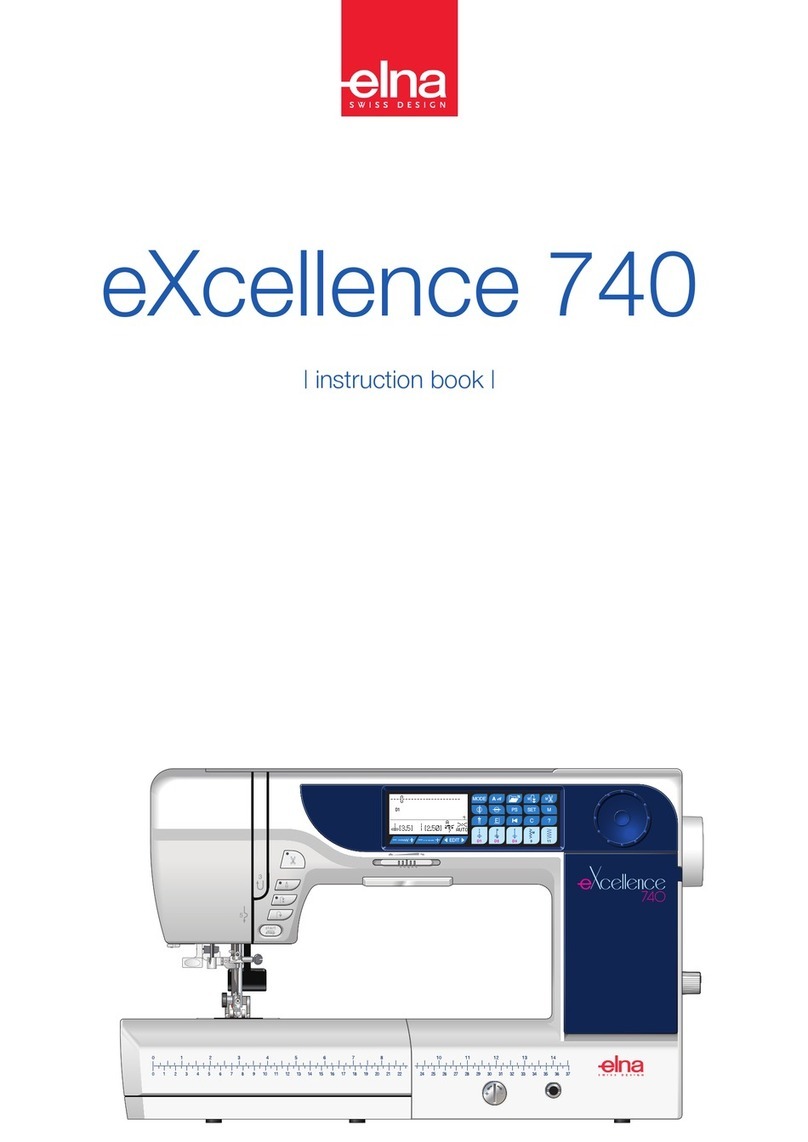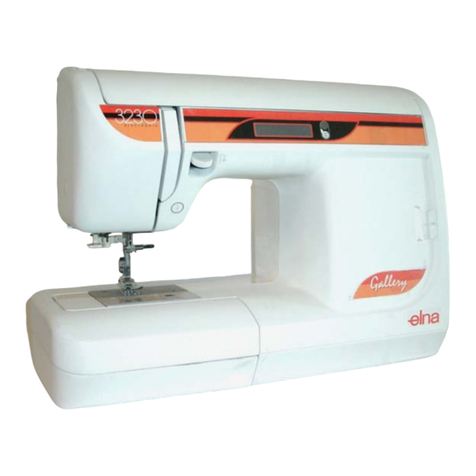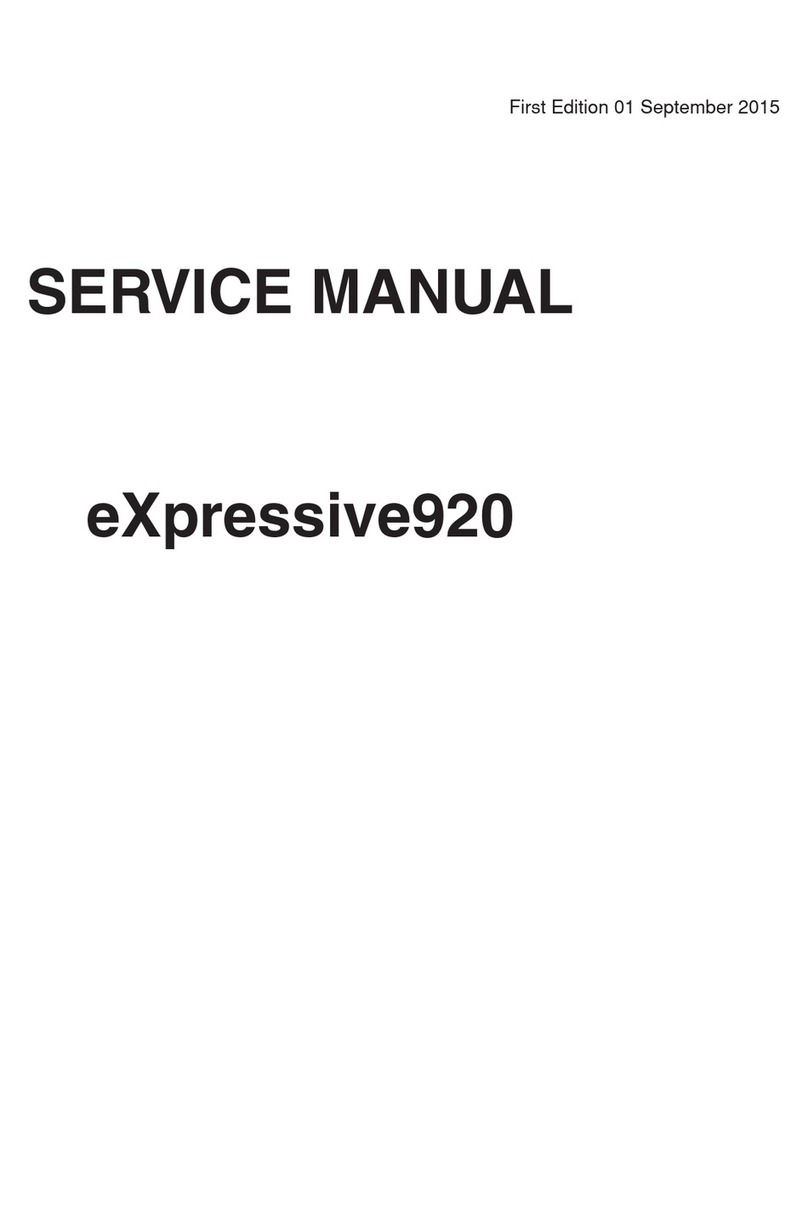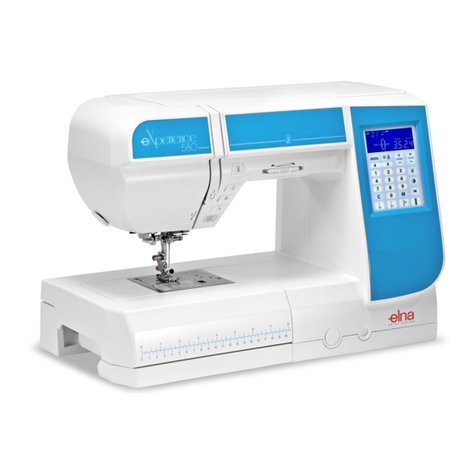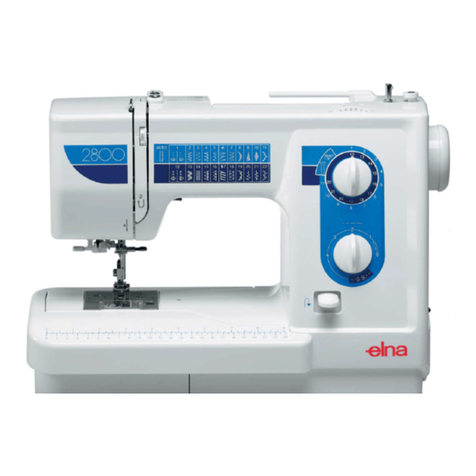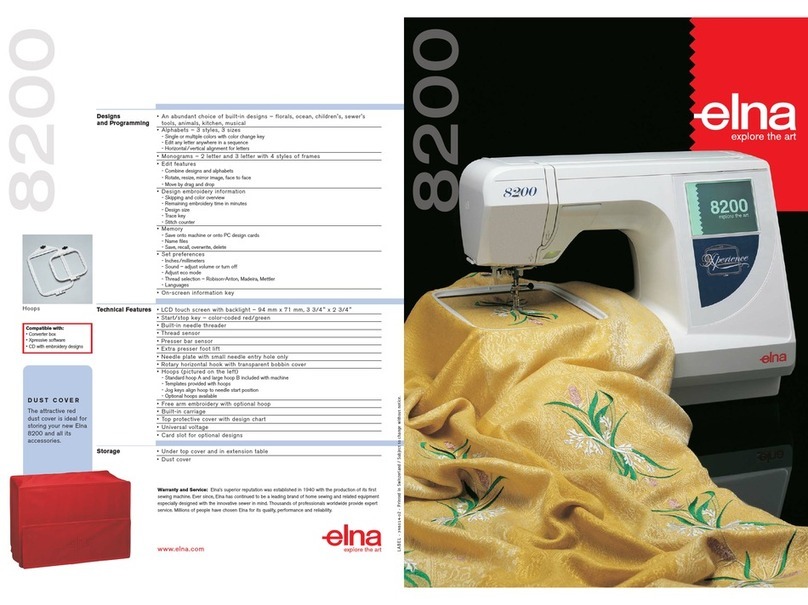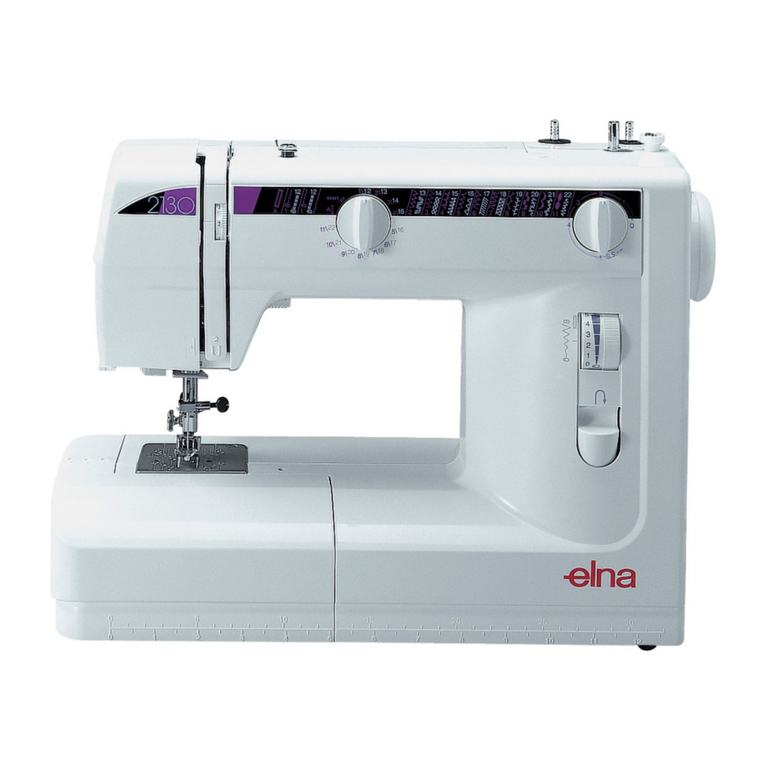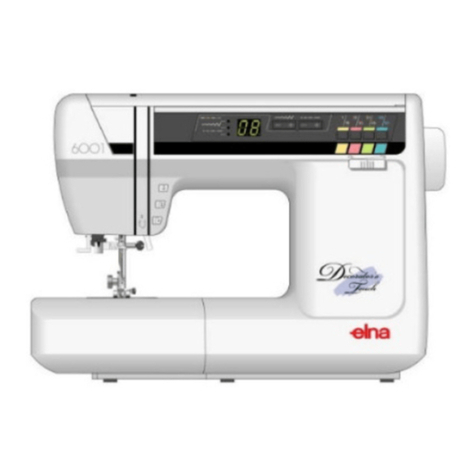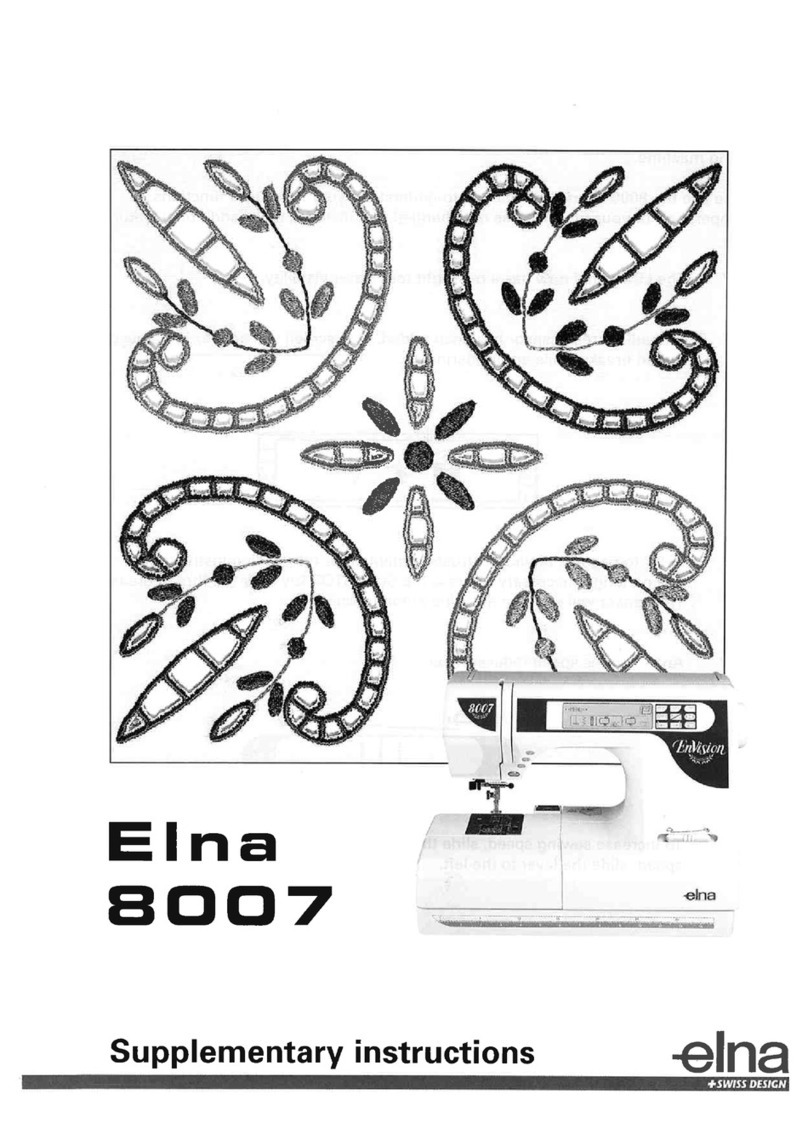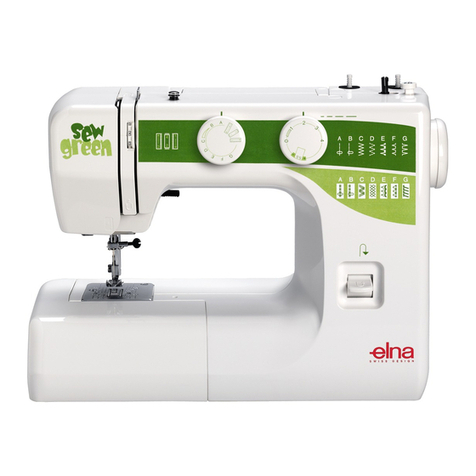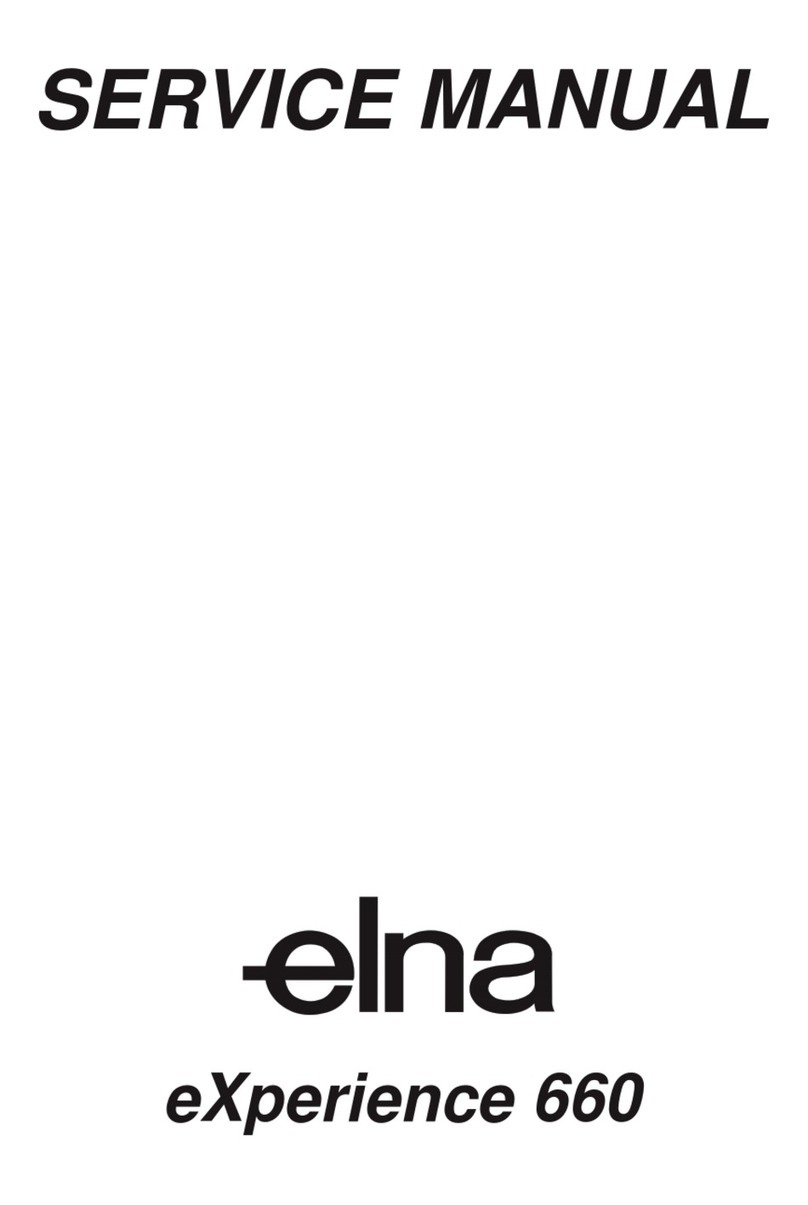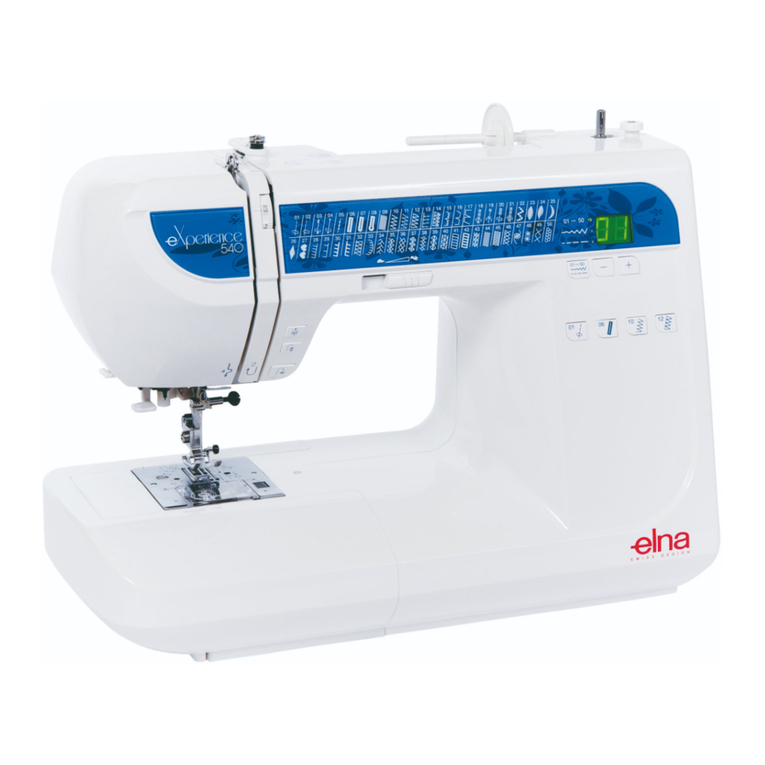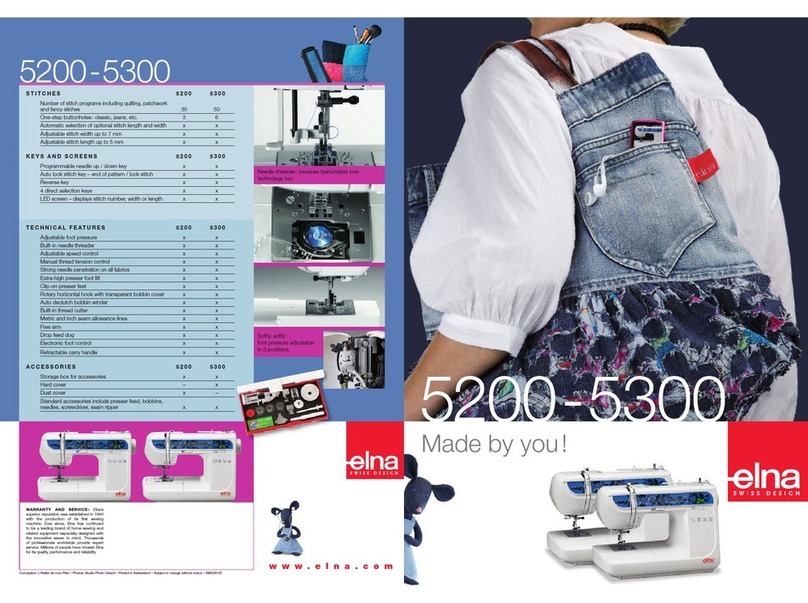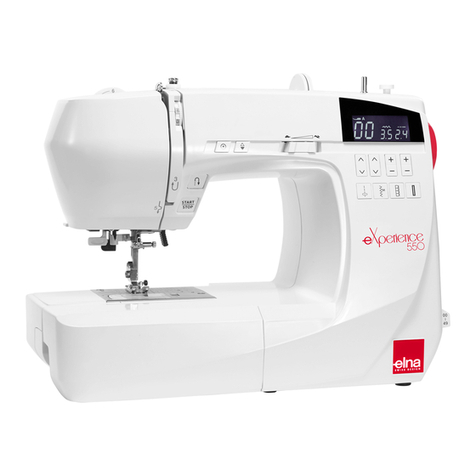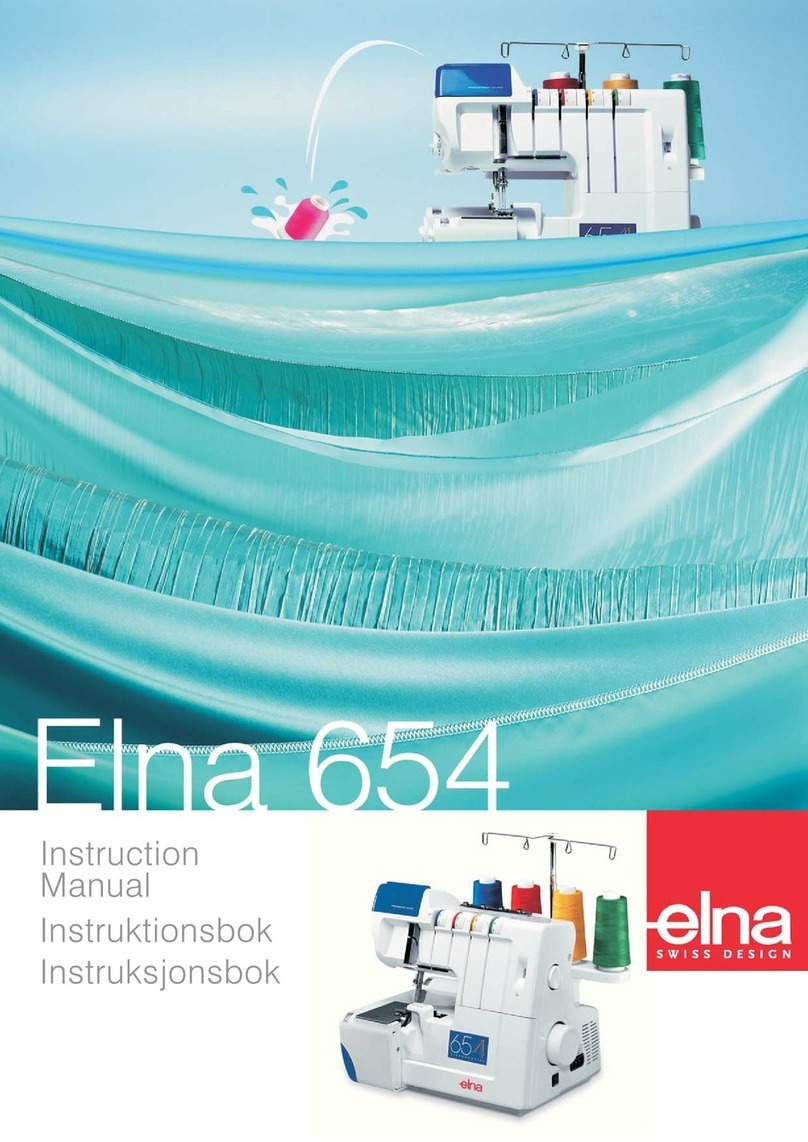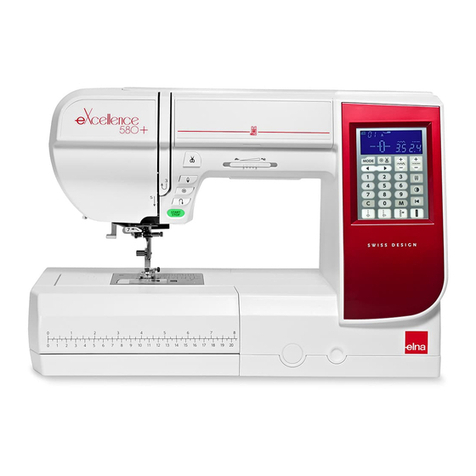
2
TABLE OF CONTENTS
ESSENTIAL PARTS
Names of Parts............................................................... 4
Standard Accessories .................................................... 5
Extension Table.............................................................. 6
Stitch Reference Chart................................................... 7
GETTING READY TO SEW
Connecting the Power Supply........................................ 8
Operating Instructions: ................................................... 8
Controlling Sewing Speed.............................................. 9
Foot Control.................................................................... 9
Machine Operating Keys .............................................. 10
Function Keys and Jog Dials.................................... 11-12
Raising and Lowering the Presser Foot ....................... 13
Knee Lifter .................................................................... 13
Replacing the Presser Foot.......................................... 14
Adjusting the Foot Pressure ......................................... 15
Removing and Attaching the Foot Holder .................... 15
Attaching the Dual Feed Foot AD................................. 16
Attaching the Professional Grade Foot HP .................. 16
Attaching the Darning Foot PD-H................................. 16
Replacing Needles ....................................................... 17
Winding the Bobbin ................................................. 18-20
Inserting the Bobbin ..................................................... 21
Threading the Machine............................................ 22-23
Built-in Needle Threader .............................................. 24
Drawing up the Bobbin Thread..................................... 25
Replacing the Needle Plate.......................................... 26
Balancing Thread Tension............................................ 27
Dropping the Feed Dog................................................ 28
Selecting the Sewing Mode.......................................... 29
Selecting the Pattern.................................................... 30
Mode 1: Direct pattern selection mode ...................... 30
Customizing direct pattern selection .......................... 31
Pattern Selection in Mode 2 and Mode 3................... 32
• Using numeral keys................................................ 32
• Using jog dials........................................................ 32
• Using arrow keys.................................................... 33
Customizing Machine Settings..................................... 33
Screen brightness ...................................................... 34
Buzzer sound ............................................................. 34
Auto thread cutting ..................................................... 34
Needle stop position................................................... 34
Adjustable start-up speed (START/STOP key) .......... 34
Adjustable start-up speed (Foot control).................... 35
Favorite stitch adjustment (FS) .................................. 35
Resume setting .......................................................... 35
Bobbin winding speed ................................................ 35
Language selection .................................................... 35
Auto-off timer.............................................................. 36
Reset all to default...................................................... 36
BASIC SEWING
Straight Stitch.......................................................... 37-39
Sewing from the Edge of Thick Fabric ......................... 37
Changing Sewing Direction .......................................... 37
Turning a Square Corner.............................................. 37
Securing Seams ........................................................... 38
Cutting Threads............................................................ 38
Needle Plate Guides .................................................... 38
Adjusting the Needle Drop Position ............................. 39
Adjusting the Stitch Length .......................................... 39
Favorite Stitch Adjustment ........................................... 40
Sewing with the Dual Feed Device............................... 41
Sewing with the Professional grade foot HP ................ 42
Variety of Straight Stitches......................................43-44
Straight Stitch in Center Needle Position ................... 43
Lock-a-matic Stitch..................................................... 43
Locking Stitch............................................................. 43
Straight Stitch in Left Needle Position........................ 44
Triple Stretch Stitch .................................................... 44
Stretch Stitches .......................................................... 44
Zipper Sewing ......................................................... 45-47
Rolled Hem................................................................... 48
Gathering...................................................................... 49
Pintucking..................................................................... 49
Basting ......................................................................... 50
Zigzag Stitches............................................................. 51
Adjusting the stitch length .......................................... 51
Adjusting the stitch width............................................ 51
Variety of Overcasting Stitches ............................... 52-53
Multiple Zigzag Stitch ................................................. 52
Overcasting Stitch ...................................................... 52
Knit Stitch ................................................................... 52
Double Overcasting Stitch.......................................... 53
Overlocking Stitch ...................................................... 53
Blind Hemming ............................................................. 54
Shell Tuck ..................................................................... 56
Variety of Buttonholes .................................................. 57
Sensor (Square) Buttonhole.................................... 58-61
Adjusting the buttonhole width ................................... 61
Adjusting the buttonhole stitch density....................... 61
Using the Stabilizer Plate ............................................. 62
Automatic (square) Buttonhole................................63-64
Round End and Fine Fabric Buttonholes ..................... 65
Keyhole Buttonholes .................................................... 65
Stretch Buttonhole........................................................ 65
Knit Buttonhole............................................................. 65
Corded Buttonhole ....................................................... 66
Button Sewing .............................................................. 67
Darning......................................................................... 68
Tacking ......................................................................... 69
Eyelet............................................................................ 70
DECORATIVE STITCHES
Applique ....................................................................... 71
Fringing......................................................................... 72
Drawn Work............................................................. 72-73
Smocking...................................................................... 73
Fagoting........................................................................ 74
Scallop.......................................................................... 74
Patchwork Piecing........................................................ 75
Angle Scales on the Needle Plate................................ 75
Patchwork..................................................................... 75
Quilting ......................................................................... 76
Stippling........................................................................ 76
Clasp Stitch .................................................................. 77
Free Motion Quilting (1)............................................77-78
Free Motion Quilting (2)................................................ 78
Satin Stitches ............................................................... 79
Elongation ratio .......................................................... 79
Twin Needle Sewing................................................ 80-81
PROGRAMMING A PATTERN COMBINATION
Pattern Combination..................................................... 82
Editing a Pattern Combination...................................... 83
